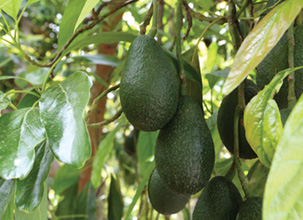Welcome to Blue Book!
Are you ready to join the thousands of companies who rely on Blue Book to drive smarter decisions? View our plans and get started today!
Still have questions? We’d love to show you what Blue Book can do for you. Drop us a line– we’ve been waiting for you.

The HAB consists of a 12-member board under U.S. Department of Agriculture (USDA) supervision. According to executive director Emiliano Escobedo, residents in U.S. western states purchase the most avocados though “between 2013 and 2014, the Southeast region (South Carolina, Georgia, Florida, and Mississippi) had the greatest increase with more than a 17 percent growth in volume sold.” Overall U.S. consumption, DeLyser says, has doubled in the last seven years.
Seasonal Competition
Both Gahl Crane of Green Earth Produce Trading, Inc. and Raymond Del Toro of M&M West Coast Produce, Inc. confirm adequate supply is an issue, but find a preference for California avocados. “Many of our retail and foodservice customers in California and the western United States will move to California fruit during the season,” Crane says. Del Toro seconds the observation: “We’ve noticed in the West if California avocados are available, most customers want to stay with them.”
Seasonality is a major factor, and California growers sell their fruit based on the influx of avocados from other markets. Lucy says every country has a window: Mexico produces fruit year-round; Peru’s season is from about mid-June to mid-September; and Chile rounds out the year in October, November, and December.
When there is an international surge, California growers keep fruit on the trees a bit longer so prices don’t drop significantly. Prior to the entrance of Mexico, Chile, and Peru into U.S. markets, California fruit could easily be picked and sold from February to July—but this window has now been reduced to May through July.
Valley Fruit & Produce Company, headquartered in Los Angeles, handles California avocados and imports on a daily basis. Jin Ju Wilder, director of marketing, comments, “Because Mexican avocado supply has increased over the past few years, the quantity available is much more influenced by seasonality than any other factor. Pricing will be affected by the ad commitments growers have made, but quantity is affected by extreme weather events or where the majority of growers’ crops are in the two-year cycle of their trees.”
Concluding Thoughts
Although California faces mounting challenges with drought, the business of growing and selling avocados is good, and the industry keeps expanding as consumers learn more about the fruit’s healthful benefits. For domestic buyers, California branding holds strong, giving growers plenty of incentive to produce the state’s high-quality, renowned avocado.
Photograph courtesy of the California Avocado Commission.




